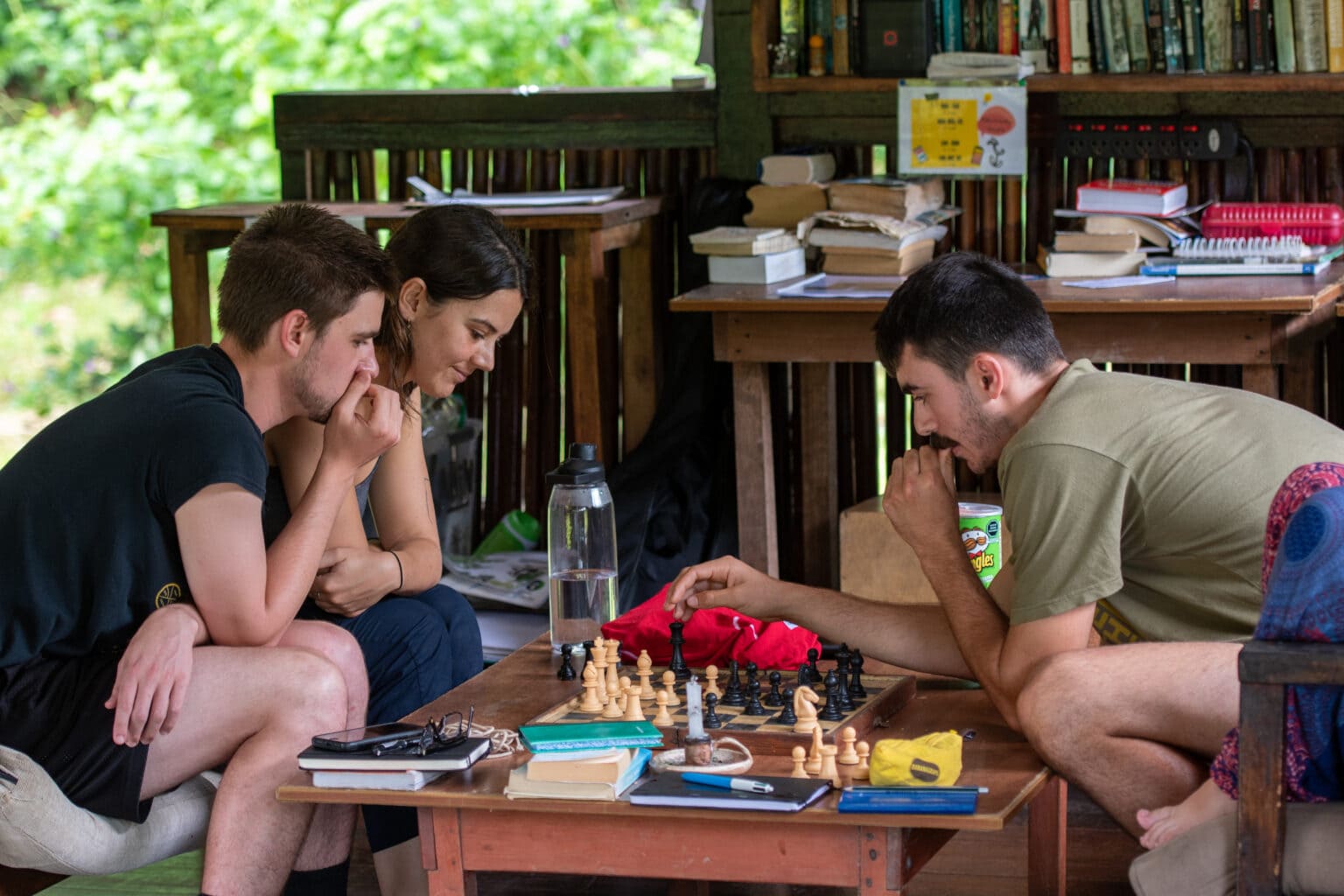
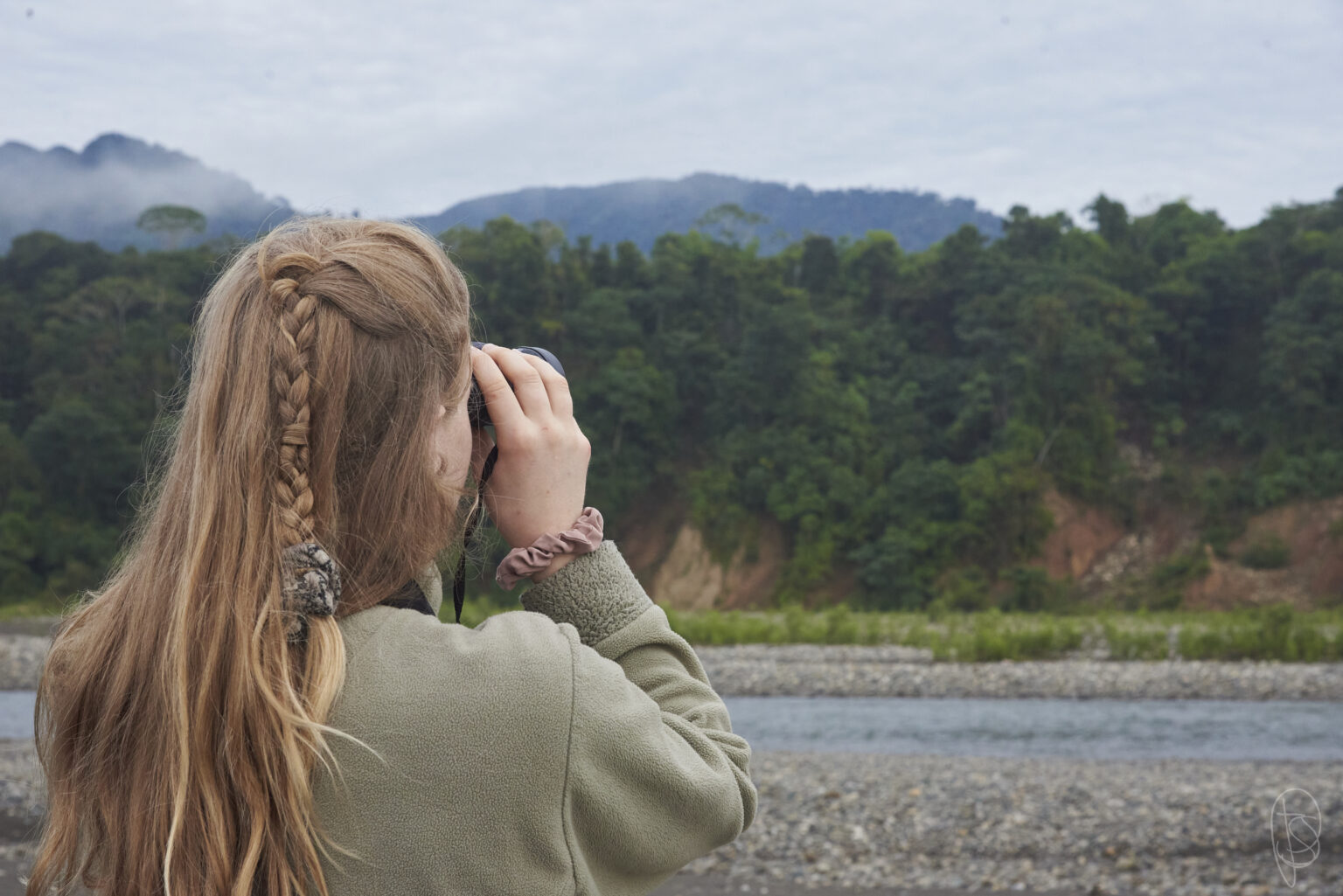
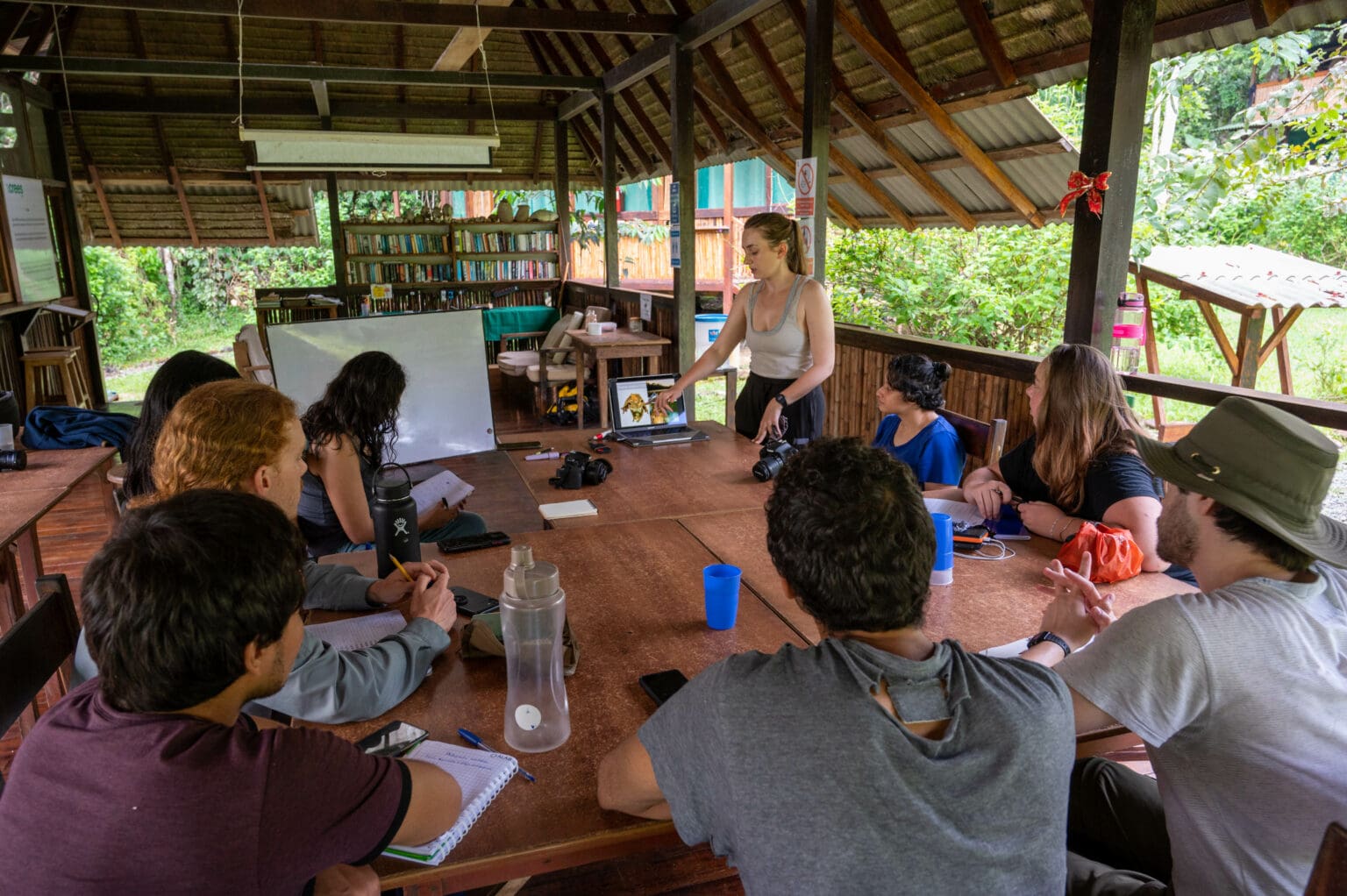
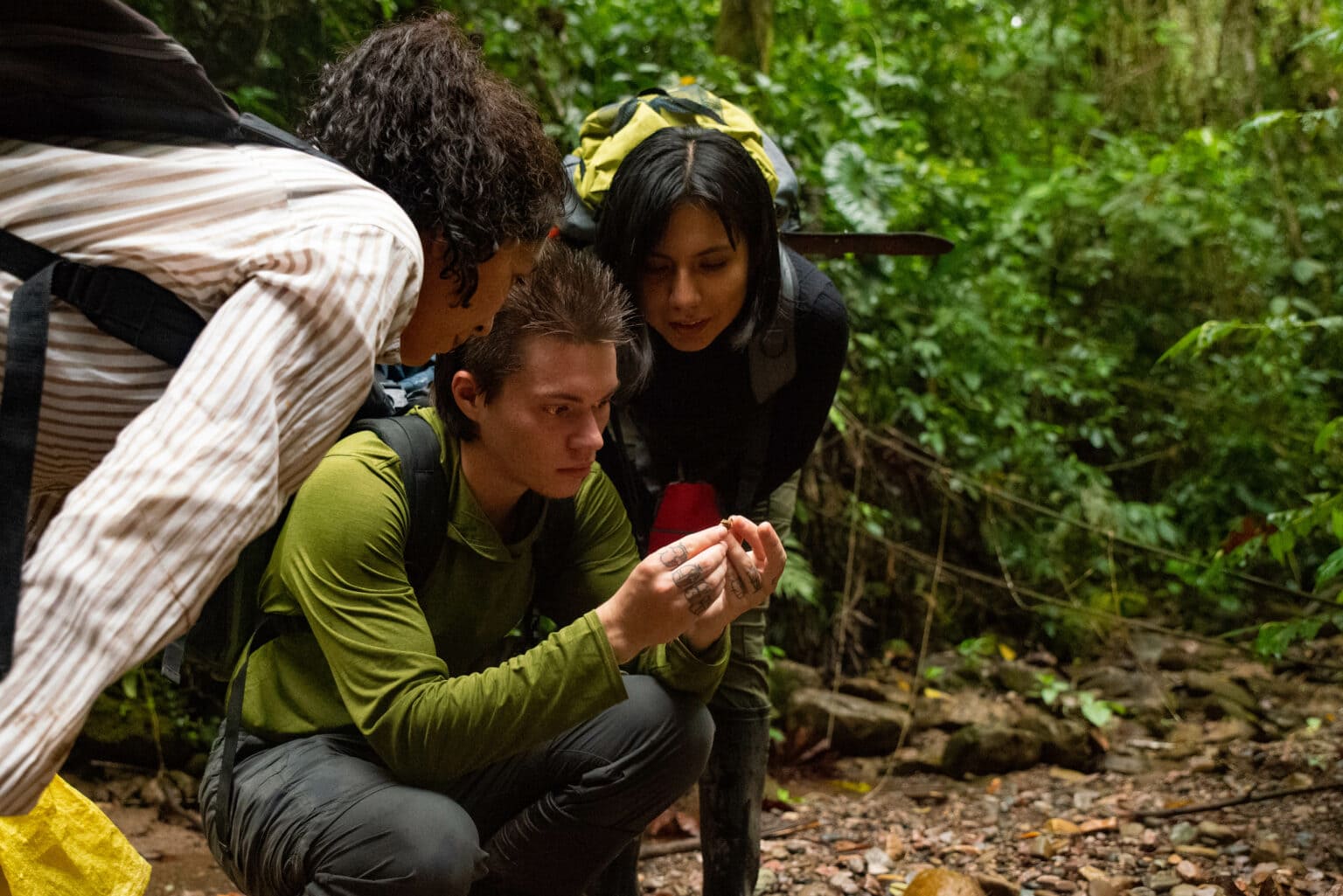


Manu Experiential Learning Programme
The Crees Experiential Volunteer Programme is designed to provide opportunities for volunteers to actively participate in important conservation and sustainable community development initiatives managed by Crees Manu. We are a leading sustainable tourism and educational company operating in the Manu Biosphere Reserve.
It is our aim to ensure that as a volunteer you have a truly inspirational experience, where you are able to contribute to sustainable, well-structured and meaningful projects. Crees is committed to an Crees Esperiential Learning Volunteer Programe where local people benefit and jobs are created, not replaced by, volunteer ventures. It is hoped that volunteers gain as much as they give, and come away fully understanding our goals and impact. We ensure each volunteer’s experience is thought-provoking and will challenge their own viewpoints and perspectives, as well as providing a deeper understanding of local realities and cultures.
DURATION
Since 2 Weeks to 12 Weeks
LODGING
Manu Learning Centre
TYPE
Experiential Learning
Our Main projects
Monitoring the clay lick (Colpa) of macaws, parrots and parakeets of Mascoitania
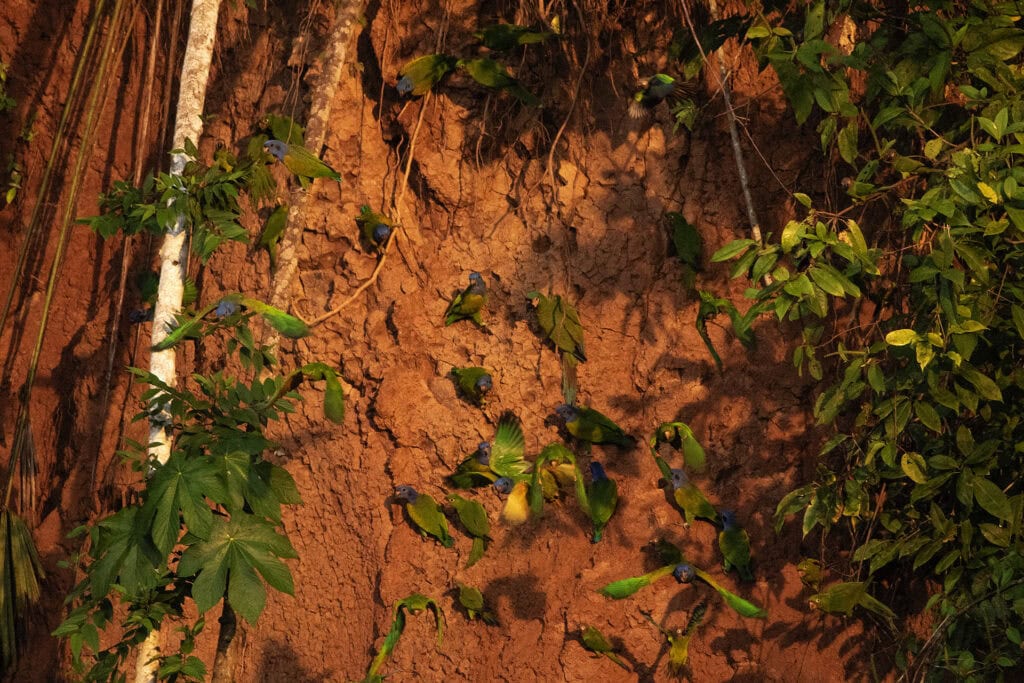
The Blue-headed macaw has been classed as Vulnerable on the IUCN Red List, meaning it is threatened with extinction. Decreasing populations are thought to be due to a combination of exploitation for pet trade, loss of habitat through deforestation, gold mining and increase of human population. So far we have found a decrease in the number of blue-headed macaws using the clay lick over the last few years, correlating with an increase in tourist numbers. Our monitoring and education efforts hope to reduce disturbance to the macaws and allow ecotourism to make a positive contribution towards their conservation. Volunteers arrive at a river island before dawn each morning to monitor our clay lick.
Avian and mammal transect, TILT (Terrestrial In-Line Transects)
The Manu Learning Centre reserve is currently known to contain 80% of the species found in geographically comparable reserves of undisturbed primary forest. Although there are some species which occur only in undisturbed primary forest, the high proportion of species that prevail in both SLR and PCR is an encouraging result that shows that over time, regenerating forest can provide significant biodiversity value. Mammal diversity is the same comparing SLR and PCR (see paper Long lasting impressions, Andy Whitworth 2018). This might be due to the fact that most have large home ranges and are just using the MLC as a connection to pass through. Still, if species are using the MLC as a corridor between Manu National Park and Amarakaeri Communal Reserve this is a great value for conservation. Future research could look into arboreal camera traps compared with the data from terrestrial transects.
Butterfly monitoring in different stages of forest regeneration
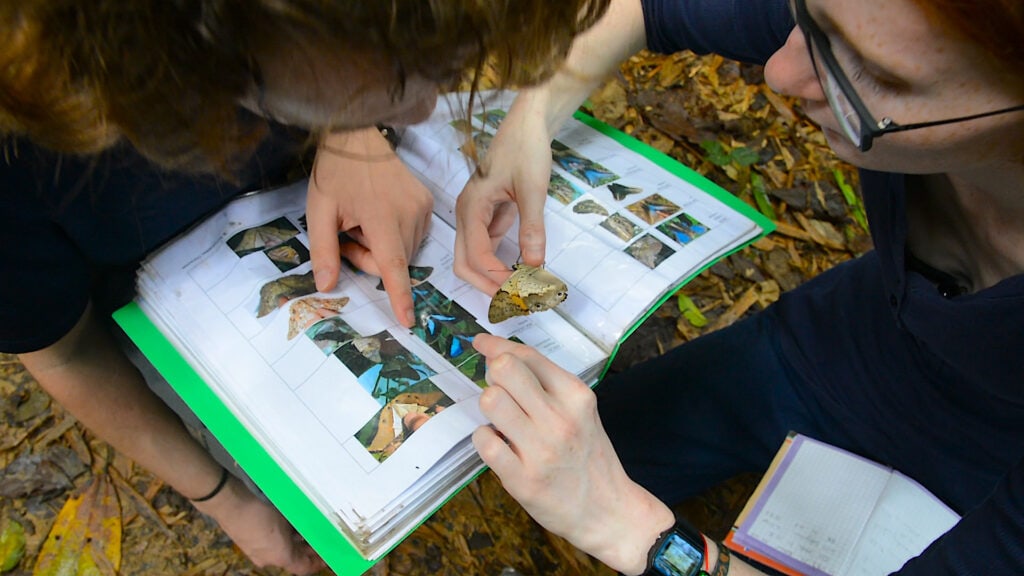
There are currently more than 550 known species of butterfly at the reserve. Butterflies are significant bio-indicators as well as pollinators for many plant species, which makes understanding their distribution throughout the forest, species density and fluctuations over time, a significant research project for us. Butterfly larvae have highly specialized diets, so we can learn about the vegetation in each part of the forest by looking at the species we find in them, and by comparing our findings in each forest type we can see what effect regenerating forest has on species distribution.
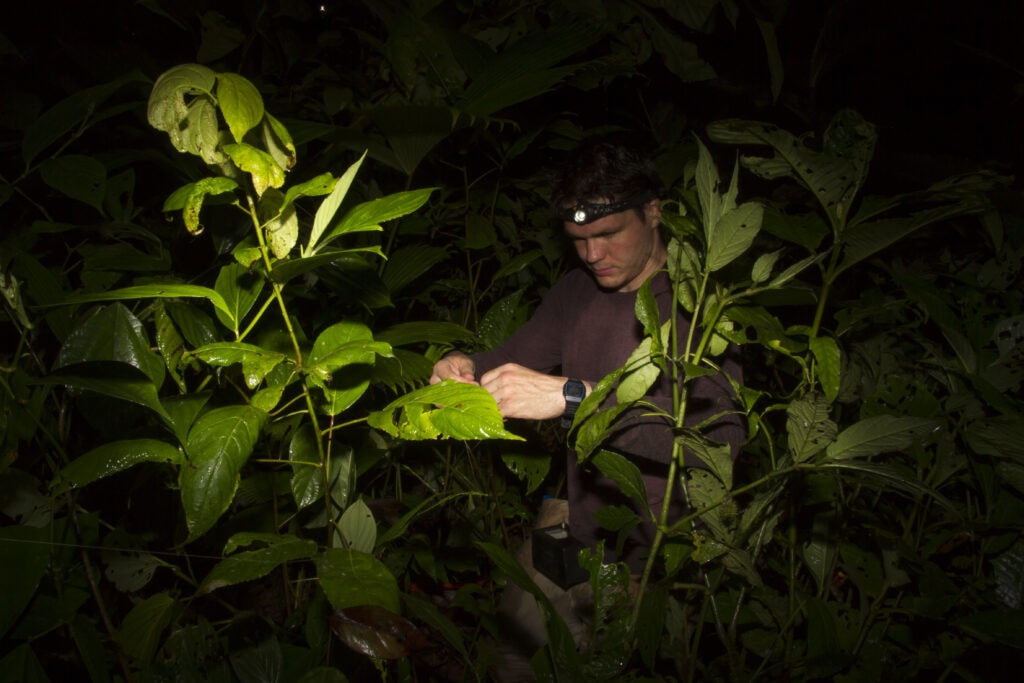
Amphibian and reptile monitoring in different stages of forest regeneration
Amphibians are excellent indicator species as they are extremely vulnerable to changes in their environment. They have very thin skin used for gaseous exchange which makes them very sensitive to chemical pollutants and also to changes in climate (e.g. temperature and humidity). Reptiles are greatly understudied, so we are keen to contribute as much as we can towards the understanding of these animals. Our herpetological surveys include visual encounter surveys where small groups of volunteers walk along a 100m trail at night looking for amphibians and reptiles. Another survey we conduct is pitfall trapping where four buckets are dug into the ground, separated by a plastic wall. We bring the animals back to the MLC to be identified, weighed and measured before being returned to the habitat they were found in the next day.
Biogarden research
At the Manu Learning Centre we have a biogarden which is used primarily for research purposes. We want to know what are the best methods for producing the greatest yield of fruits and vegetables using the smallest growing space.
This information is then fed back to our community project staff who direct work locally on the ground in our beneficiaries’ Biogardens. Everything grown is carefully looked after by volunteers, weighed, measured and then used by the MLC kitchen.
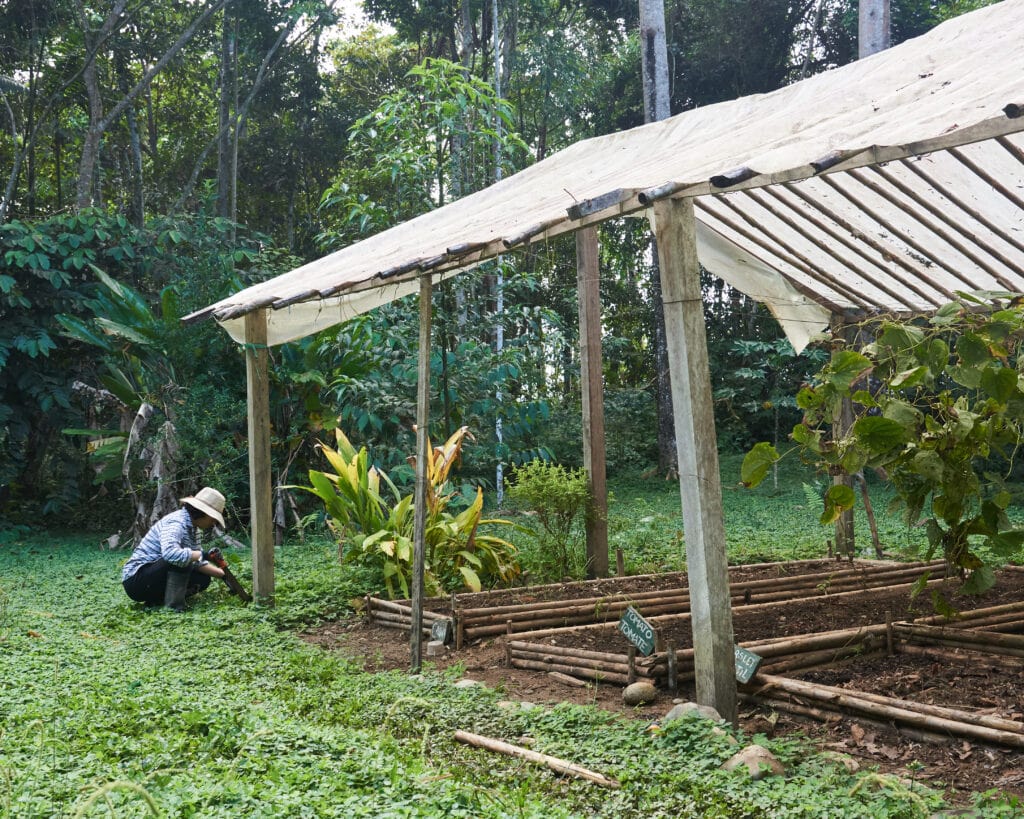
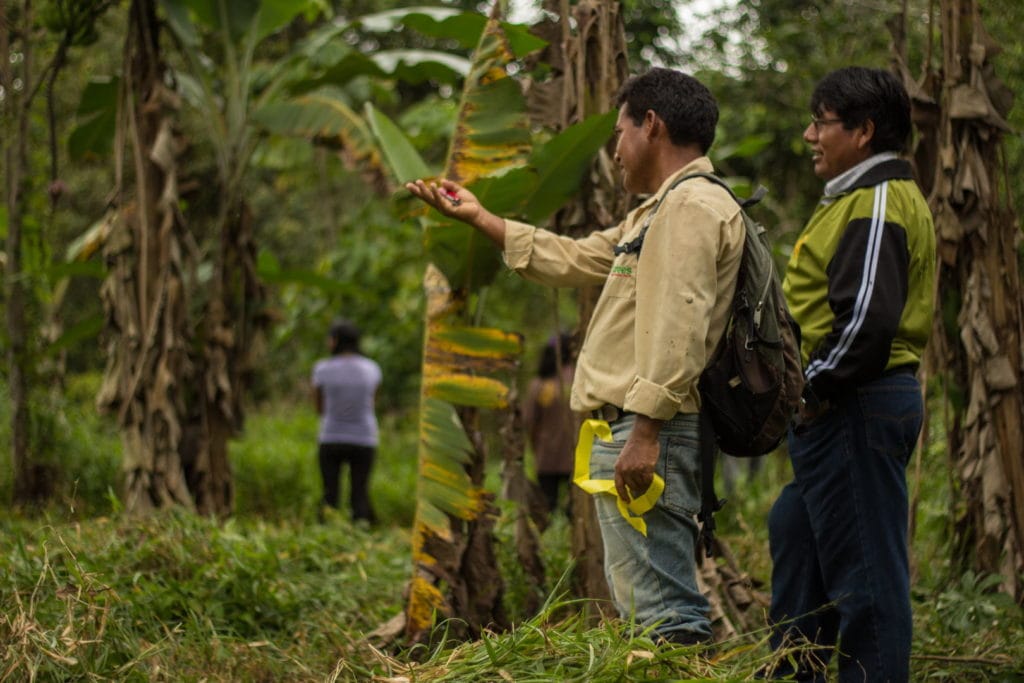
Sustainable Community initiatives
We work with local communities in Manu to create sustainable income that meets the challenges faced by remote rainforest towns. Poverty and lack of access to higher education in Manu forces many families into unsustainable work such as illegal logging, slash and burn agriculture and mining. To date our community projects have positively impacted more than 600 people – five times our original aim.
NB: Crees works under ethically responsible policies where we employ local people for our community projects. Please note that because of this, community project work for volunteers only takes up a small portion of individual volunteer itineraries during times of high volunteer numbers. Take a look at this inspiring UN Award winning short film featuring our community Advisor, Reynaldo – Rainforest Hero. https://bit.ly/ReynaldoRainforestHero
Biogardens projects
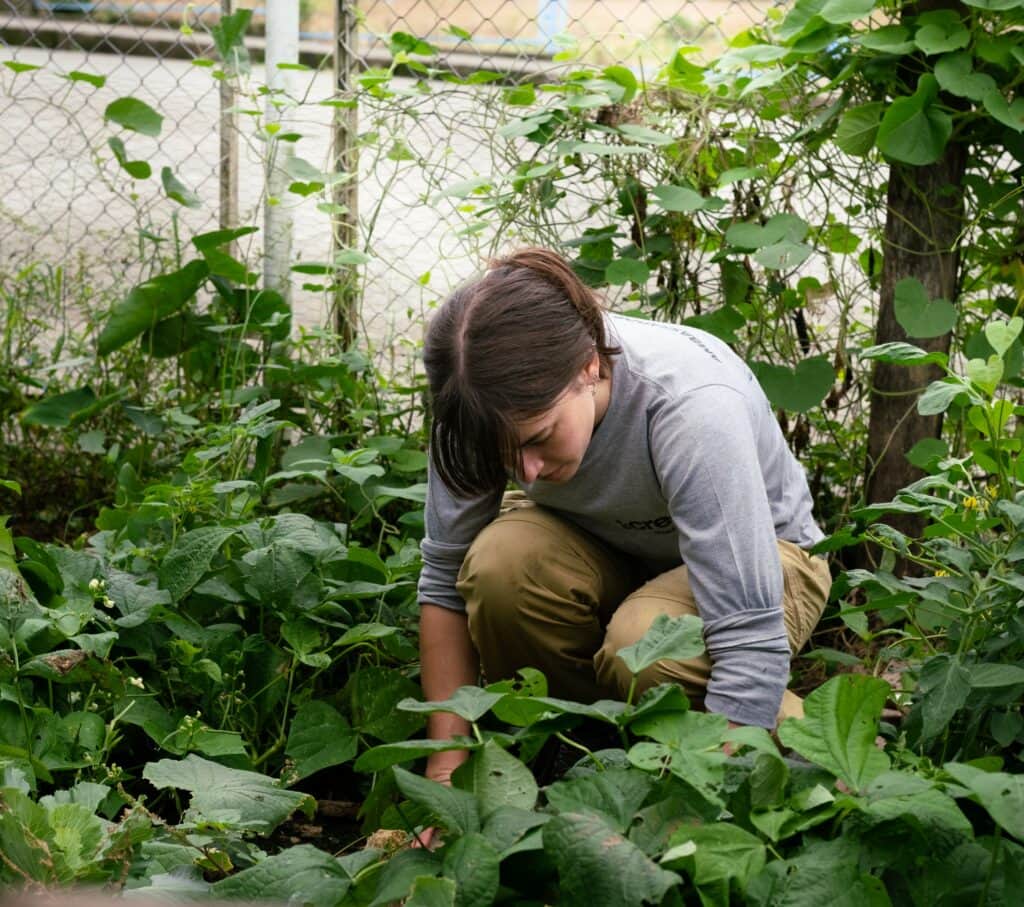
The Crees biogarden project works specifically with local families to avoid malnutrition by providing resources and knowledge to build bio gardens that improve nutrition and health by providing fresh food for families, and extra incomes through surplus crops, particularly for women with young children, instead of purchasing vegetables shipped in from Cusco, which can be a sporadic limited selection and poor quality after an 8+ hour truck dusty journey.
Biogardens give families access to fresh produce year-round for use or sale in their own backyards. We provide full materials and labor (from our staff and volunteers) to build the biogardens in addition to supporting technical assistance, maintenance visits, workshops on themes such as controlling pests, diseases, composting and cooking classes with local products. Building biogardens also allows cultural exchange between local families with visitors to Manu from around the world.
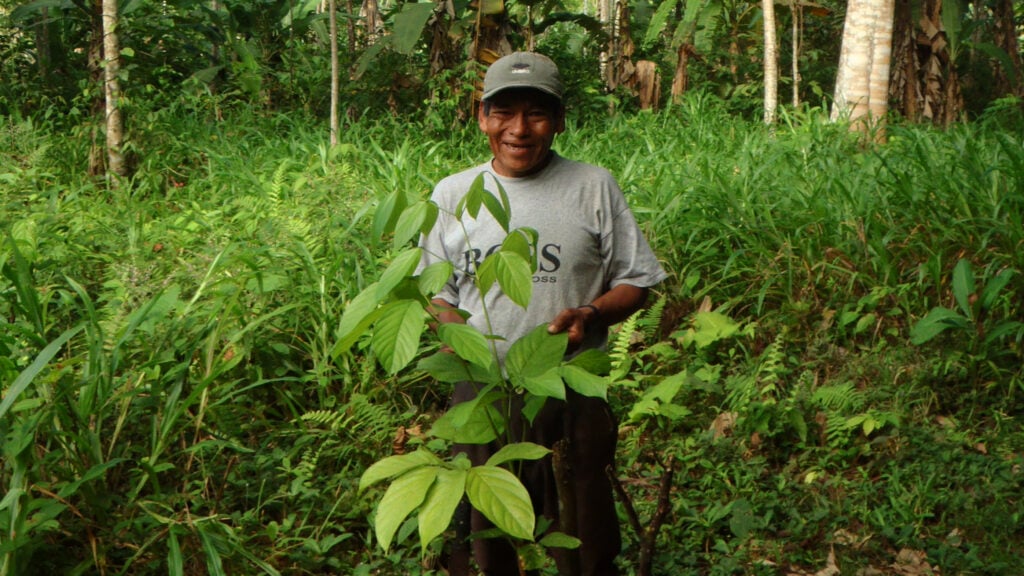
Agroforestry
Crees has planted over the 50,000 trees before the agroforestry project. These plots spanning over 60 hectares are creating the first programme in Perú of the carbon credits that can be sold to further support this project, the Crees Agroforestry plot is an approach to farming that combines elements of both agriculture and forestry. In Manu, it involves integrating trees with banana crops to diversify income, providing short-term income from banana and medium to long-term income from fast and slow-growing commercially valuable timber trees. These cash crops can be harvested in rotation while also recreating a forest canopy and this is an environmentally sustainable alternative to illegal logging activities in the surrounding forest.
Teaching the teachers of the Future (Designed for local students within the Manu National Park)
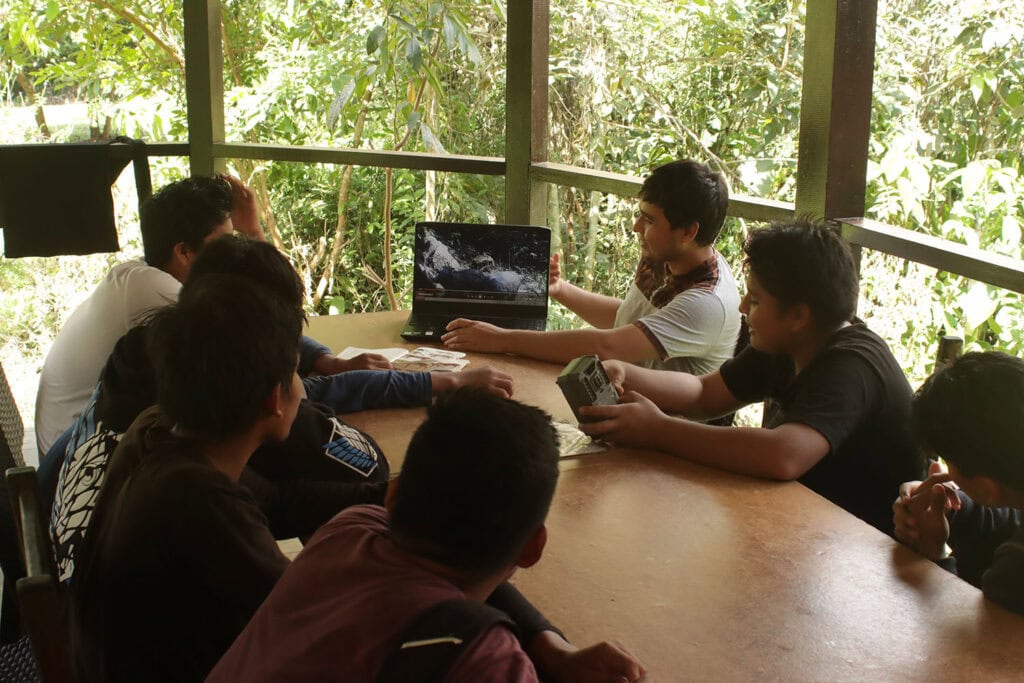
This programme is a learning initiative about the values of the primary and regenerating rainforest with
Teaching the Teachers of the future Programme is a full-day open class activity at Manu Learning Centre that involves 10 fixed departures during the year (100 students plus 20 teachers) 100% free of charge for local students. We are sure that programme like this help the eco-friendly ideas spread from students to other members of the community so that over time community members and leaders can become environmental – sustainable decision-makers. Our Volunteers and Interns assist the Crees staff with the local student visits at the Biological Field Station, Manu Learning Centre.
DATES FOR 2025
Choose the duration of your Experiential Learning Volunteer Programme from 2 weeks up to 12 weeks.
- January 27th
- February 24th
- March 24th
- April 21st
- May 19th
- June 16th
- July 14th
- August 11th
- September 8th
- October 6th
- November 3rd
- December 1st
PRICES
Experiential Learning 2 Week Volunteer Programme: $1,800 USD
Experiential Learning 4 Week Volunteer Programme: $2,200 USD
Experiential Learning 6 Week Volunteer Programme: $3,000 USD
Experiential Learning 8 Week Volunteer Programme: $4,000 USD
Experiential Learning 10 Week Volunteer Programme: $4,600 USD
Experiential Learning 12 Week Volunteer Programme: $5,750 USD
Additional two week increments: US $ 800.00
All prices include in-country travel, food and accommodation. Accompanied by professional guides and trained staff, where applicable. Any additional activities, where there is the opportunity to participate, such as in Peruvian Festivities (Dependent on the time of year)
By visiting the Manu Rainforest with Crees you will be actively supporting our conservation and community projects in the Amazon protecting nature and empowering local people.
